- Sep 21, 2006
- 21,430
- 13
- 0
- Real Name
- Paul
They may be small but they have quite the elegance most gouramis do not have and many people fail to realize that.
Okay, folks, I made this blog in dedication to the gorgeous licorice gouramis. Just to start with, before I bought these fish, I kept researching even for several hours on their basic needs. Their reputation for being difficult to keep is what has made me quite restless for a few days before I got them. As the saying goes 'You have to try it to believe it', so I tried. What amazes me though is these gouramis are quite feisty and active. This seems to make the information of them being difficult very vague.
Update as of November 30, 2007:
All six licorice gouramis are doing well and seem pretty active often darting across the middle section of the tank and hiding beneath leaf litter, inside PVC pipes and Java moss.
The information below will be for your convenience. I will continuously update it if needed be as I try to continue caring for these fish.
Origin:
Licorice gouramis hail from the eastern Malaysian Peninsula and north of Southern Thailand. The water there is very soft and acidic. They live in parts of the river system where water is very slow-moving but well-oxygenated.
Size:
Licorice gouramis grow to 3-4 cm only.
Water Conditions:
Although it can be argued that these fish are best kept in water with pH as low as 5.5, I kept mine in water conditions constant at 7.0 and filtered through peat with additional Indian almond leaves. The heavy amounts of tannins being leached makes them feel more comfortable in their home and well-protected from fungal and bacterial infections.
Temperature:
76-84 degrees Fahrenheit or 24-29 degrees Celsius
Care:
Until now, around the aquarium trade, people keep repeating that these fish are very somewhat difficult to keep. This alone naturally will drive people away from their dreams to keep this fish. Why? They are scared for the most part that they will lose the fish and their well-earned cash but this is not always the case. How are you going to learn if you keep distancing yourself from things you fear as much as you would love to try? I would recommend you make negotiations with your local pet store. Keep a watch on this fish as they stay in the store for four weeks. If all goes well, you may buy them afterwards making sure you are observant of their health conditions.
A few things to keep in mind, this fish naturally thrives best in soft, acidic water, so your best bet is to make sure the tank water is filtered through peat. Driftwoods and Indian almond leaves are also a must. For the sake of this fish, learn to accept and bear with the appearance of your yellow water. The tannins themselves are what makes the fish healthier and less prone to fungal and bacterial infections. For more information on tannins, please see this entry.
The next thing to proceed with is tank size. Many people claim smaller tanks are more unstable in terms of water conditions than large tanks. While this is true, there are benefits with keeping smaller tanks as well. You should know how to keep everything stable without panicking. A tank size of 15 gallons is the minimum I would recommend although even smaller than that will work. The biggest tank I would surely recommend is 25 gallons. Larger than that will not be recommended as the fish will simply feel "lost" in its environment.
For a 15 gallons tank, you should be able to keep 8-12 of these fish. The tank must be furnished with leaf litter (Indian almond leaves), driftwoods, pipes (yes, pipes) and several plants. Substrate will not matter but do make sure it is inert and won't affect the pH. Java moss is very important and is much appreciated by this fish as a means of refuge. Filtration should not produce too much currents as this fish will certainly not appreciate the currents. A sponge filter should be sufficient.
On tank maintenance, I would recommend doing 20-30% water change on daily basis. Small frequent water changes are far more safer for this fish than big water changes as they will not be happy with the tremendous changes in water conditions.
Tankmates:
There is also a question of what to keep with this small fish. Considering this fish cannot really compete well with other fish for food, I would recommend keeping them with other small fish making sure they are equally competitive. I mixed them with my Corydoras panda, Corydoras paleatus, Sturisoma panamense and sparkling gouramis (Trichopsis pumila). Other suitable tankmates will include the chocolate gouramis (Sphaerichthys osphromenoides), samurai gouramis (Sphaerichthys vaillanti) and the wild betta species such as Betta coccina, Betta smaragdina, etc.
Foods:
For this fish, live foods are a must and are very important. The food menu must also be varied. They will appreciate bloodworms, mosquito larva, daphnia, brine shrimps, mealworms and commercial foods. They cannot and will not live on commercial foods alone and have the tendency to starve themselves to death.
Sexing:
Sexing is not very easy however it has been mentioned that the males could have longer ventral fins in comparison to the females. Also, males appear to be more colorful than the females.
Breeding:
Unlike other anabantid species, licorice gouramis are cave spawners and will not create bubblenests near the surface. Instead, they will construct a bubblenest inside the cave they pick (which is why I recommended pipes and eventually Java moss for added security and comfort). For more information on breeding, you can click this link.
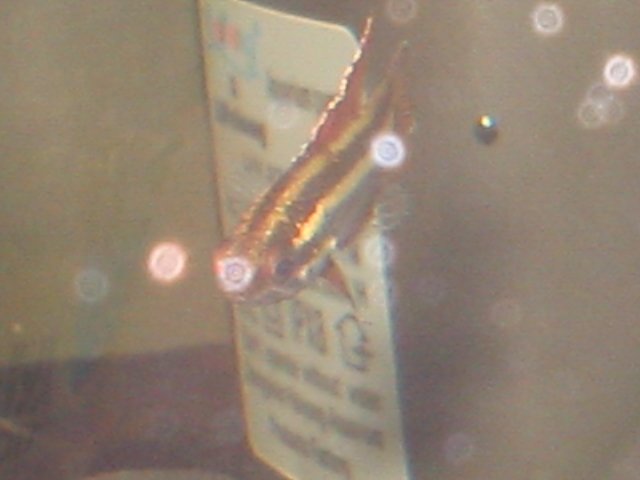
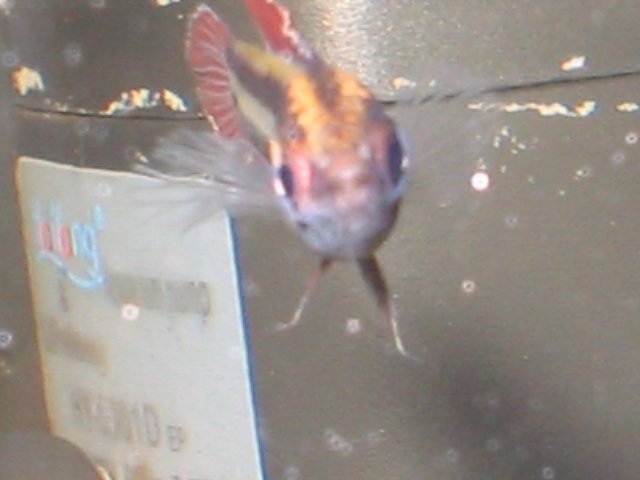
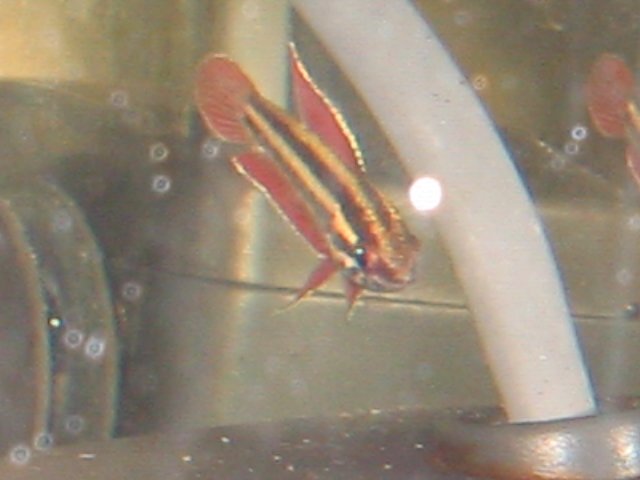
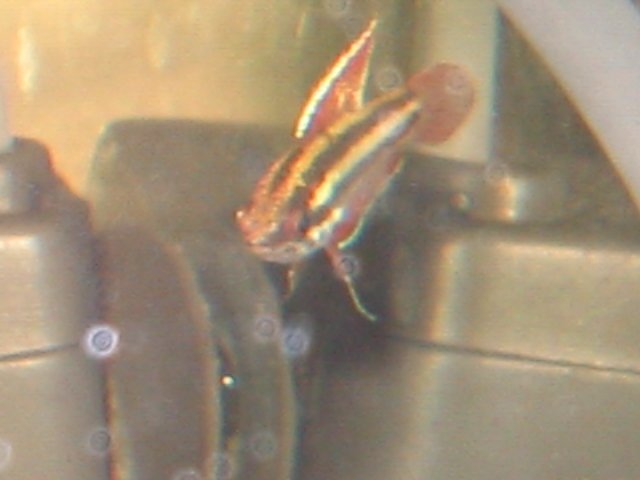
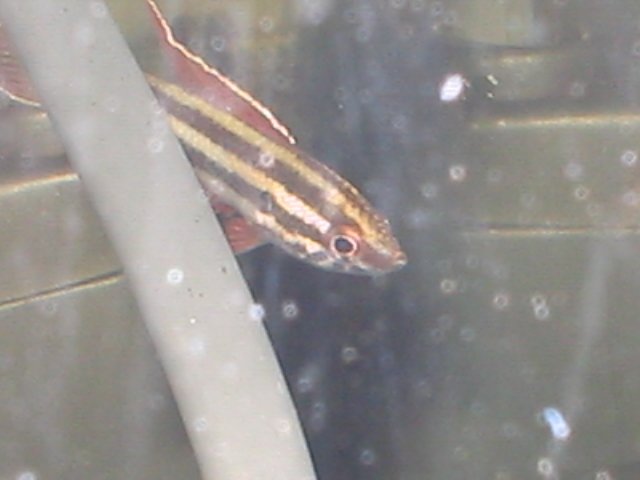

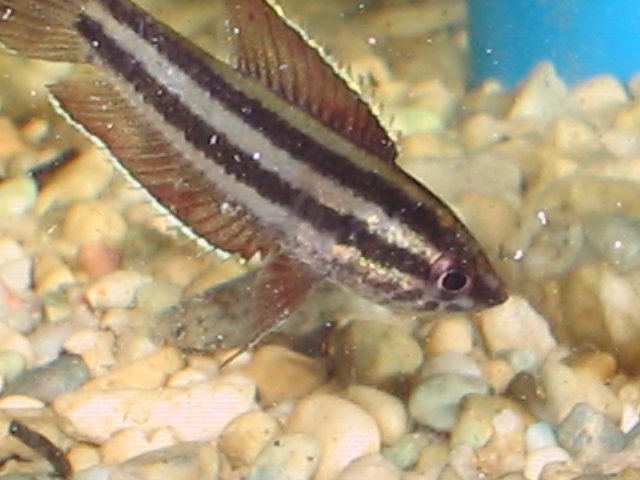
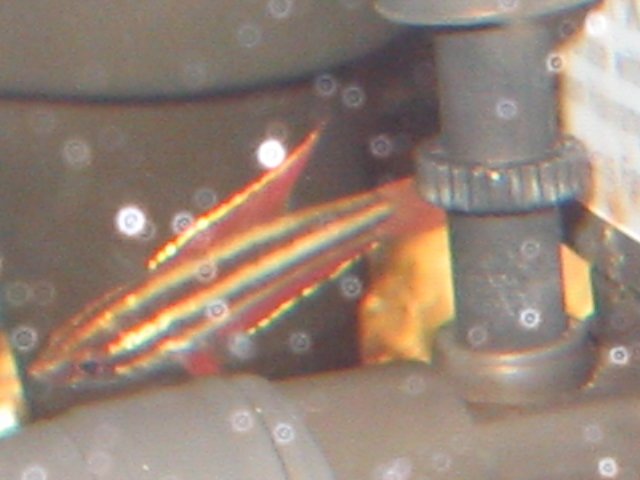
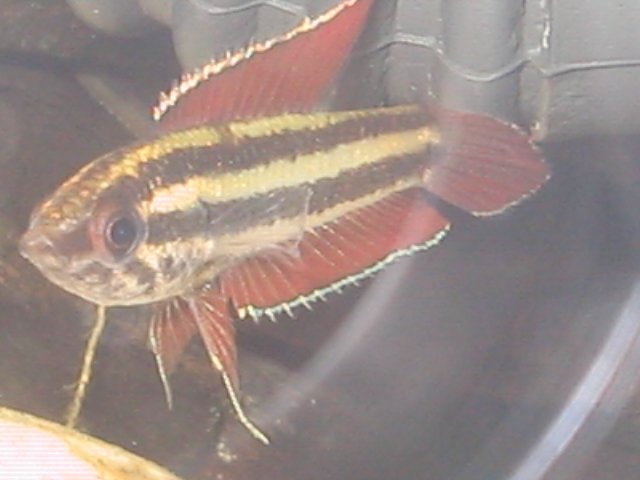
Okay, folks, I made this blog in dedication to the gorgeous licorice gouramis. Just to start with, before I bought these fish, I kept researching even for several hours on their basic needs. Their reputation for being difficult to keep is what has made me quite restless for a few days before I got them. As the saying goes 'You have to try it to believe it', so I tried. What amazes me though is these gouramis are quite feisty and active. This seems to make the information of them being difficult very vague.
Update as of November 30, 2007:
All six licorice gouramis are doing well and seem pretty active often darting across the middle section of the tank and hiding beneath leaf litter, inside PVC pipes and Java moss.
The information below will be for your convenience. I will continuously update it if needed be as I try to continue caring for these fish.
Origin:
Licorice gouramis hail from the eastern Malaysian Peninsula and north of Southern Thailand. The water there is very soft and acidic. They live in parts of the river system where water is very slow-moving but well-oxygenated.
Size:
Licorice gouramis grow to 3-4 cm only.
Water Conditions:
Although it can be argued that these fish are best kept in water with pH as low as 5.5, I kept mine in water conditions constant at 7.0 and filtered through peat with additional Indian almond leaves. The heavy amounts of tannins being leached makes them feel more comfortable in their home and well-protected from fungal and bacterial infections.
Temperature:
76-84 degrees Fahrenheit or 24-29 degrees Celsius
Care:
Until now, around the aquarium trade, people keep repeating that these fish are very somewhat difficult to keep. This alone naturally will drive people away from their dreams to keep this fish. Why? They are scared for the most part that they will lose the fish and their well-earned cash but this is not always the case. How are you going to learn if you keep distancing yourself from things you fear as much as you would love to try? I would recommend you make negotiations with your local pet store. Keep a watch on this fish as they stay in the store for four weeks. If all goes well, you may buy them afterwards making sure you are observant of their health conditions.
A few things to keep in mind, this fish naturally thrives best in soft, acidic water, so your best bet is to make sure the tank water is filtered through peat. Driftwoods and Indian almond leaves are also a must. For the sake of this fish, learn to accept and bear with the appearance of your yellow water. The tannins themselves are what makes the fish healthier and less prone to fungal and bacterial infections. For more information on tannins, please see this entry.
The next thing to proceed with is tank size. Many people claim smaller tanks are more unstable in terms of water conditions than large tanks. While this is true, there are benefits with keeping smaller tanks as well. You should know how to keep everything stable without panicking. A tank size of 15 gallons is the minimum I would recommend although even smaller than that will work. The biggest tank I would surely recommend is 25 gallons. Larger than that will not be recommended as the fish will simply feel "lost" in its environment.
For a 15 gallons tank, you should be able to keep 8-12 of these fish. The tank must be furnished with leaf litter (Indian almond leaves), driftwoods, pipes (yes, pipes) and several plants. Substrate will not matter but do make sure it is inert and won't affect the pH. Java moss is very important and is much appreciated by this fish as a means of refuge. Filtration should not produce too much currents as this fish will certainly not appreciate the currents. A sponge filter should be sufficient.
On tank maintenance, I would recommend doing 20-30% water change on daily basis. Small frequent water changes are far more safer for this fish than big water changes as they will not be happy with the tremendous changes in water conditions.
Tankmates:
There is also a question of what to keep with this small fish. Considering this fish cannot really compete well with other fish for food, I would recommend keeping them with other small fish making sure they are equally competitive. I mixed them with my Corydoras panda, Corydoras paleatus, Sturisoma panamense and sparkling gouramis (Trichopsis pumila). Other suitable tankmates will include the chocolate gouramis (Sphaerichthys osphromenoides), samurai gouramis (Sphaerichthys vaillanti) and the wild betta species such as Betta coccina, Betta smaragdina, etc.
Foods:
For this fish, live foods are a must and are very important. The food menu must also be varied. They will appreciate bloodworms, mosquito larva, daphnia, brine shrimps, mealworms and commercial foods. They cannot and will not live on commercial foods alone and have the tendency to starve themselves to death.
Sexing:
Sexing is not very easy however it has been mentioned that the males could have longer ventral fins in comparison to the females. Also, males appear to be more colorful than the females.
Breeding:
Unlike other anabantid species, licorice gouramis are cave spawners and will not create bubblenests near the surface. Instead, they will construct a bubblenest inside the cave they pick (which is why I recommended pipes and eventually Java moss for added security and comfort). For more information on breeding, you can click this link.











